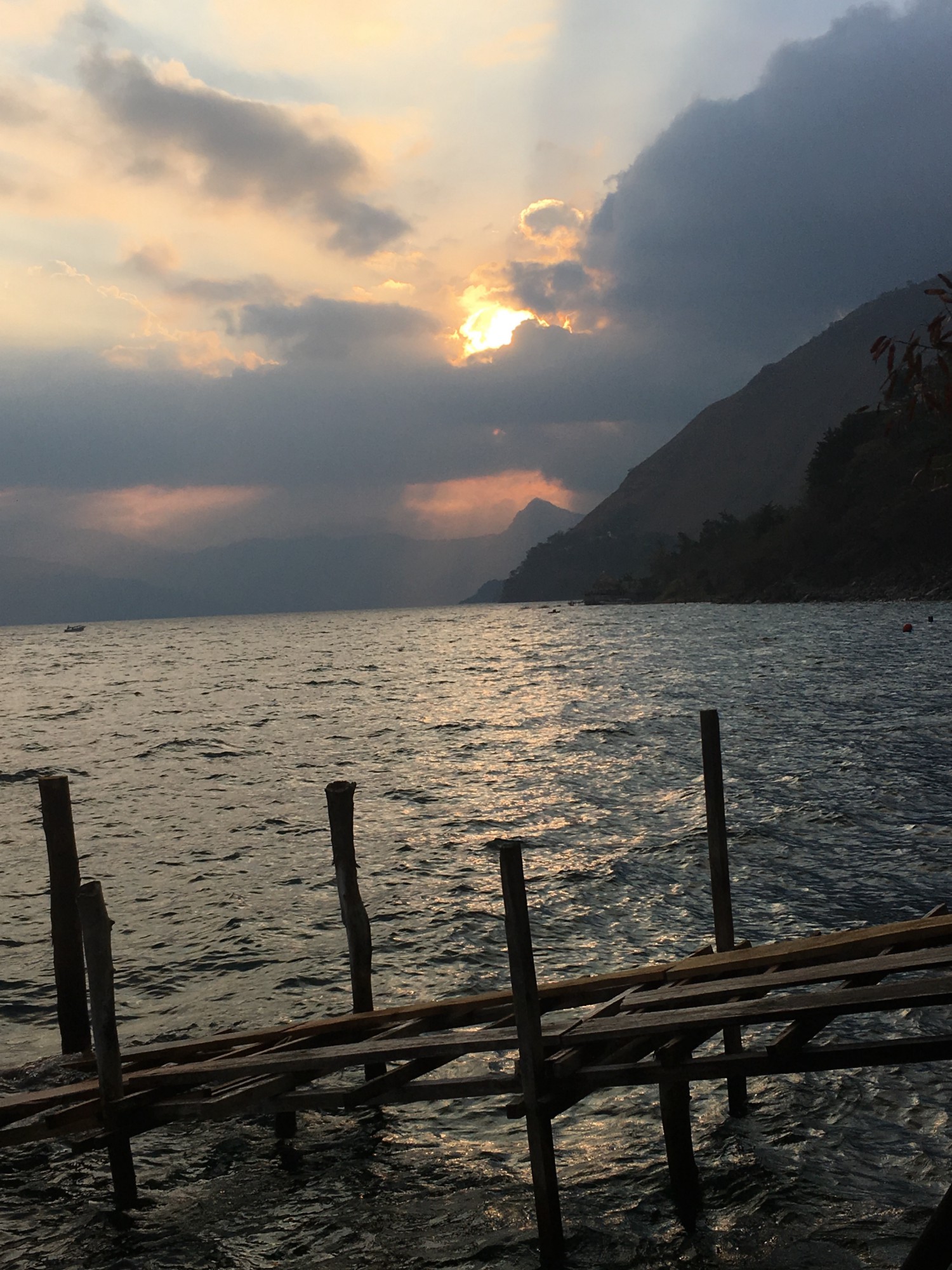When Finding Your Way is Easier than You Think.
My first day on the lake, eager to explore, I followed the path along the water’s edge. I’d been told that if I kept the lake and sheltering volcanoes on my left I’d soon reach the road to the pueblo on my right. But I’d barely been walking five minutes when the dirt path dead-ended. I turned back. And back at the beginning I met a sun-burnt hiker, young, muscled,baseball capped.

“Did you enjoy your walk?” he asked.
“I lost the path,” I said.
“Next time,” he advised (young enough to be my son if I had had one), “keep going. When it looks as if the path has ended, pause and look around. You’ll find it again in another form.”
I’d driven, flown, landed, flown again, took taxi, bus and boat, so I could place my sandaled feet on Mayan earth. I wasn’t giving up. I walked back along the walkway, then across loosely spaced planks, ill-fitting wooden teeth with blue lake blinking up between them.
Then, when the path met a cement wall. I stood still, and looked, until it appeared again, wide only as a human foot this time. Again and again the path seemed to end. And each time I paused, looked, and found it in another form:
Here, dirt packed tight, then humped rocks, then smooth paving stones, then wood again, then sand and steps made of sandbags. I climbed the narrow road that climbed to the pueblo where women weave and children learn, then followed the high path home through the bosque, past the healer’s house, and on and on.

All week long, I let my feet explore the smooth, then rocky, sandy, creaking, patched and shaky paths, all the while trying not to think about the troubles I’d left back home: The rising tide of hate. Headlines of another unjust action. And then I’d look up to see volcanoes on the other side, sleeping under shawls of sunset clouds.
And I’d be woken out of daydreams by a Buenas tardes from a worker heading home. Someone who was surviving so much himself, who knew these hills that have known poverty, blood, brutality, war. Who’d stand and smile to give me time to smile, too, return the greeting, before we each went on. I wish I’d had the words to ask about the wisdom in those twinkling eyes, that radiant smile. How to survive and work and pray and not give up that light.

Every afternoon I’d walk again, venturing onto different dusty routes, exchange smiles with each villager along the way, and when I’d reach what seemed to be the end of one path, I’d pause and look around, until I found the road was there again, just in another form.
At the coffee urn one morning, I met the young traveler once again.
“Did you find the path?” he asked.
I told him, “Yes, I did.”

“When it looks as if the path has ended, pause and look around. You’ll find it again in another form.”
Thank you for reading. If you’ve enjoyed reading this story, please click the ❤ below, so others might find it, too!
For more posts in this series, continue reading:
Dreaming on Lake Atitlan
The Heart is Where Home Is
Originally published at tziviagover.com on February 13, 2017.
Originally published at medium.com


